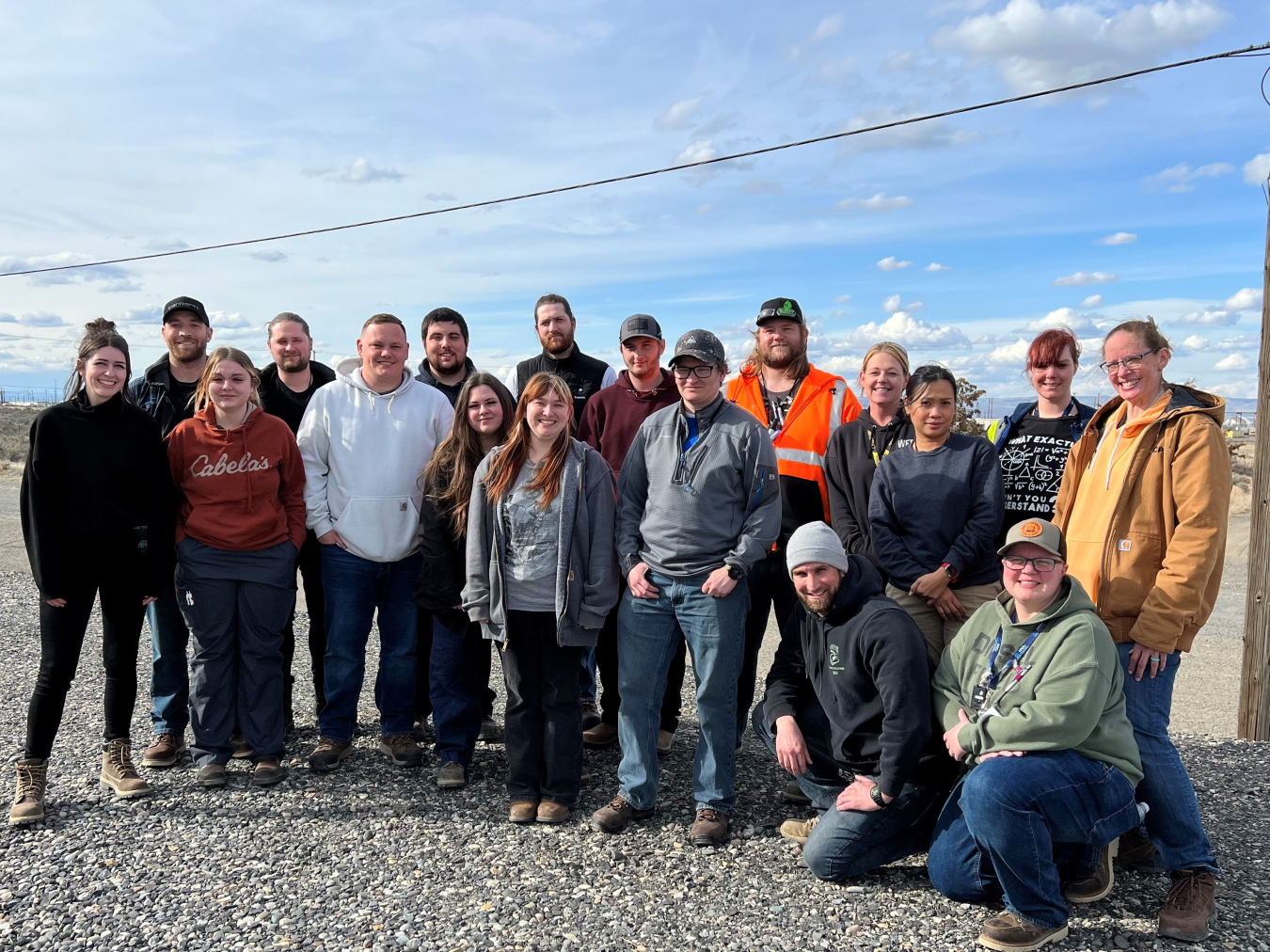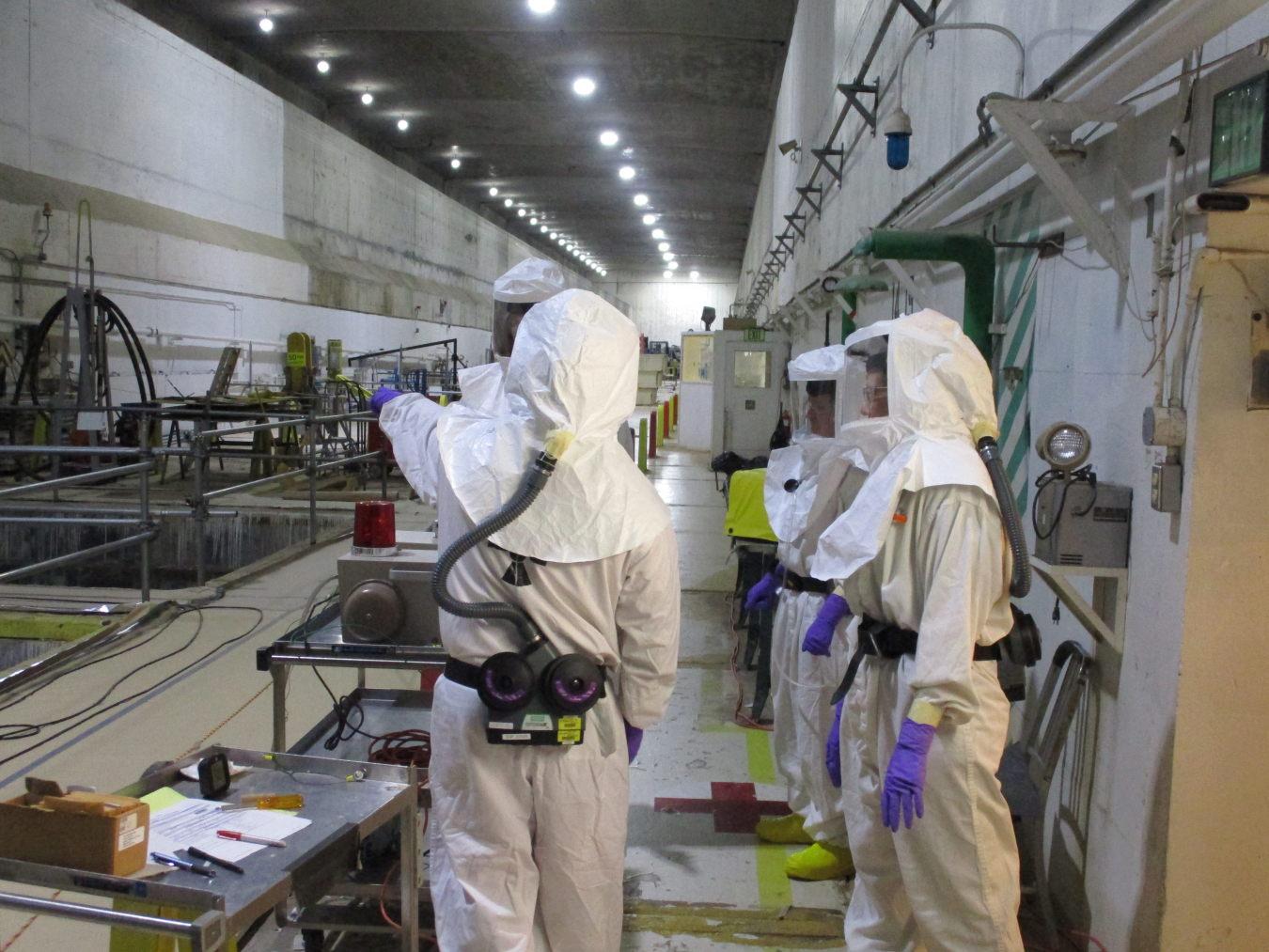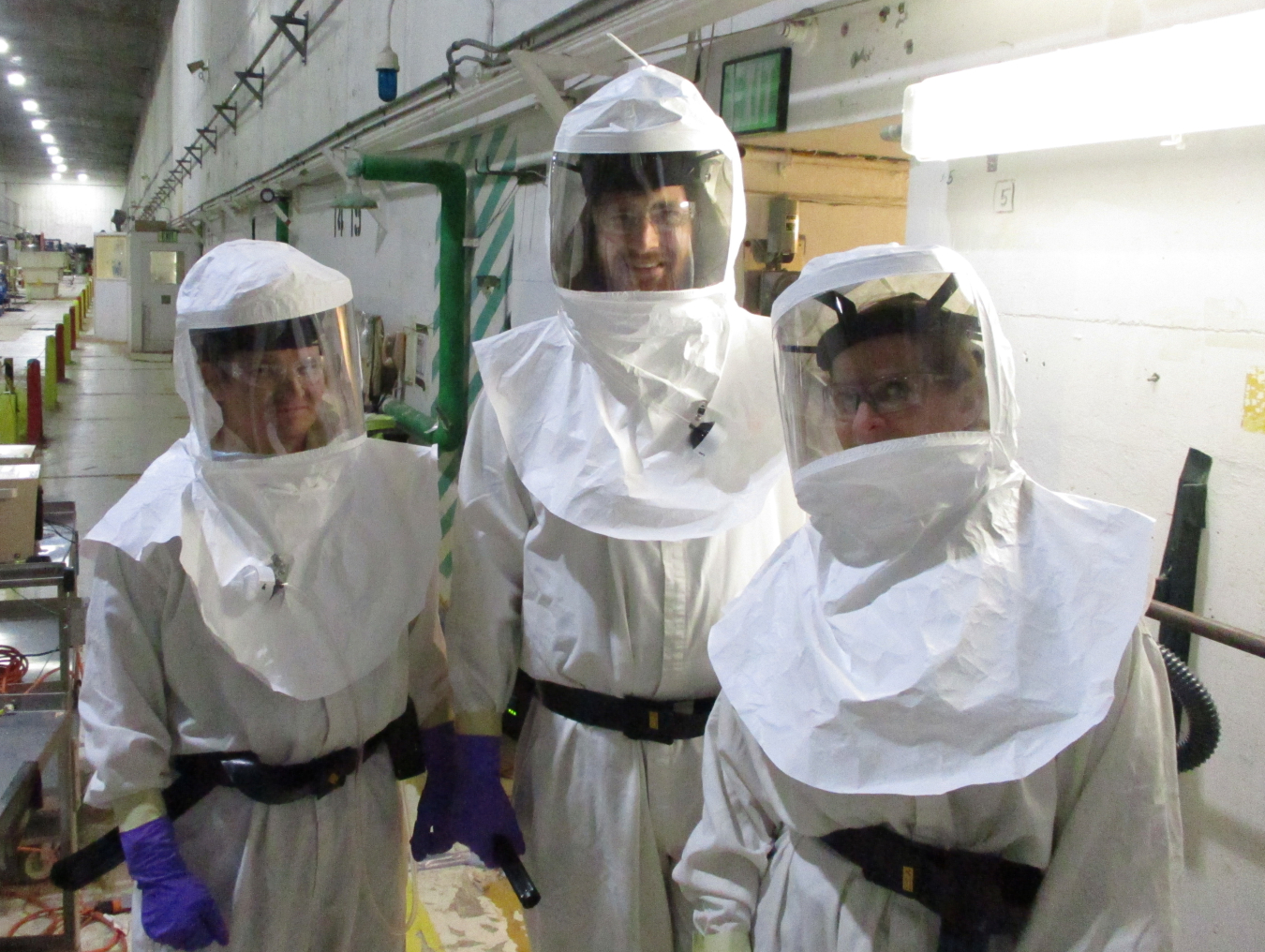A comprehensive health physics training program is not only reinforcing radiation safety but also building the next-generation workforce at the Hanford Site.
Office of Environmental Management
May 30, 2023
Graduates of EM contractor Central Plateau Cleanup Company’s first health physics technician training course, from left, are Mariah Movick, Sydney Hall, Bella Balderman, Jay Daffe, Alex Loomis, Ryan Cantwell, Nadia Barbarosh, Makenna Monroe, Brad Scott, Presten Savage, Travis Roos, Drake Grieder, Ian Olexa (kneeling), Shanna Seholm, Lealene Quiambo, Dana Young (kneeling), Brittany Robertson and Piper Vucelick.
RICHLAND, Wash. – A comprehensive health physics training program is not only reinforcing radiation safety but also building the next-generation workforce at the Hanford Site.
EM Richland Operations Office contractor Central Plateau Cleanup Company (CPCCo) began a 17-week health physics course earlier this year to provide robust training supporting the site’s ongoing environmental cleanup mission. Once certified, the health physics technicians, or HPTs, are the radiation safety “police,” ensuring that any potential radiological hazards are identified and properly managed to protect workers, the public and the environment.

After completing EM contractor Central Plateau Cleanup Company’s 17-week health physics course, participants continue on-the-job training for an additional six months before they can test to become certified as health physics technicians at the Hanford Site.
“A robust health physics program is vital to a healthy safety culture,” said Glyn Trenchard, Office of River Protection assistant manager for Safety and Environment. “It is critical to ensuring the safe deactivation and decommissioning of nuclear facilities on the Hanford Site.”
Students in the HPT training course learn how to calculate radiation doses, estimate the potential risk of exposure and interpret data from radiation detection instruments. Coursework also includes site-specific information such as Hanford’s safety culture, documentation and emergency response. Students also complete four weeks of practical hands-on training at the nearby Volpentest HAMMER Federal Training Center.
“HPTs play a critical role in the work we do at Hanford, and getting certified involves a lot of education and training,” said Roy Lightfoot, CPCCo radiological protection manager. “Whether they have previous nuclear experience or not, HPT students learn about the job from the ground up; everything from isotopes to safety culture to federal regulations to the history and evolution of radiological control.”
Students who pass the HPT test at the end of the initial course begin rotations as trainees at CPCCo projects across the Hanford Site. Graduates will continue to receive on-the-job training for another six months before they are eligible to become certified HPTs.

“Taking the HPT training changed some goals in my life,” said Ian Olexa, a recent graduate of the course. “I did something completely out of the norm that I never thought I could do. It’s a really good opportunity to support an important mission.”
Based on the success of the course, CPCCo launched another course this spring.
To receive the latest news and updates about the Office of Environmental Management, submit your e-mail address.

